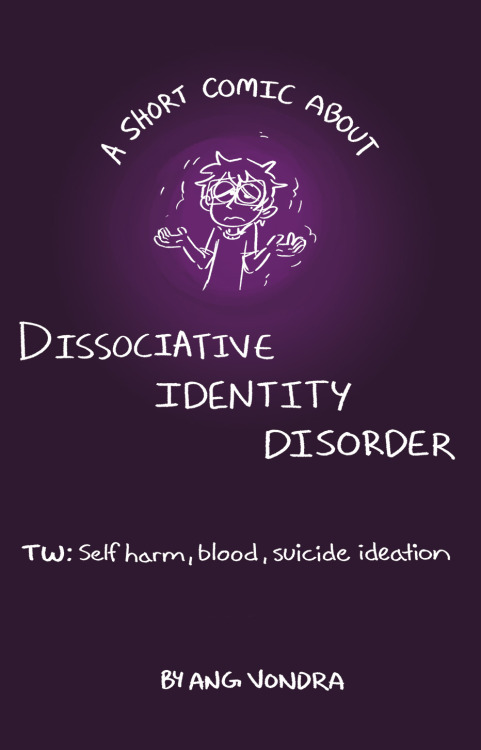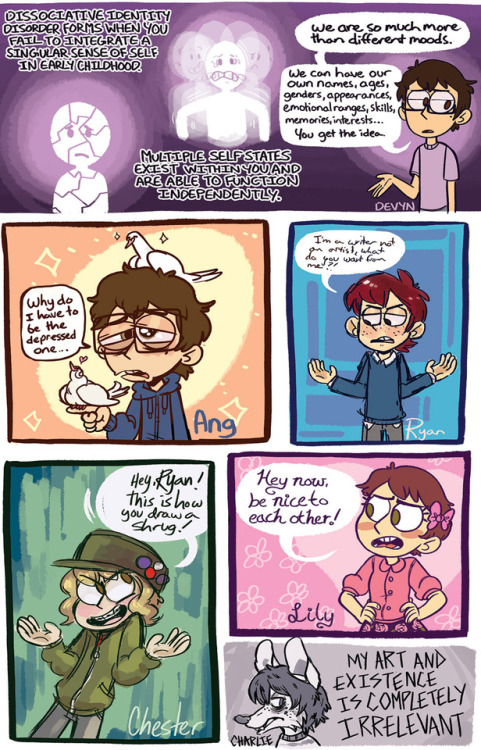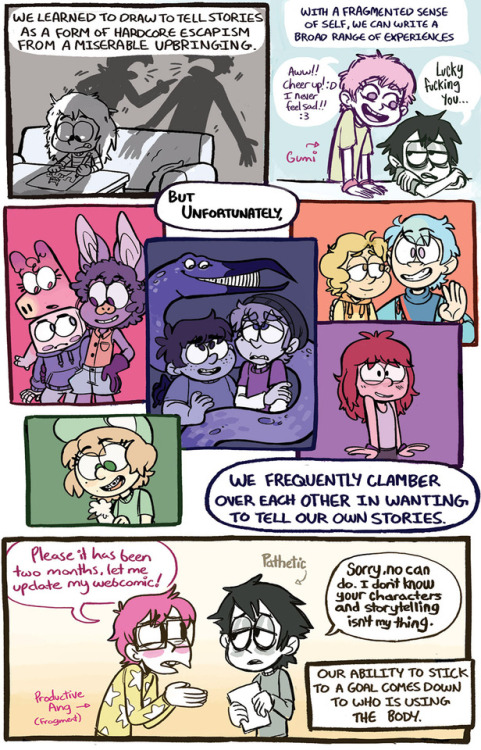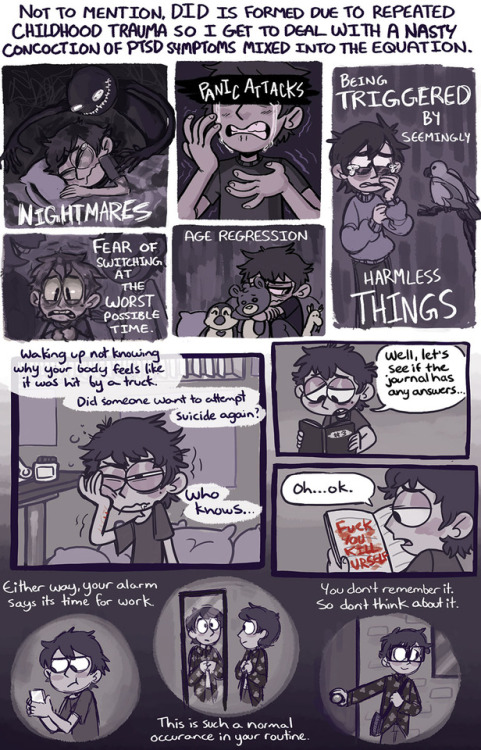shyocean:reverie-system:handsomehugs:DO NOT REPOST THIS COMIC. IF YOU WANT TO SHARE IT, PLEASE D
shyocean:reverie-system: handsomehugs: DO NOT REPOST THIS COMIC. IF YOU WANT TO SHARE IT, PLEASE DO SO FROM THE SOURCE. Here is my submission for @zakeno’s Mental Health Zine to help fight stigma in the professional field. My contribution is about my experiences with Dissociative Identity Disorder, which is sadly highly stigmatized and misunderstood, even within the mental health field (despite there being tons of concrete research to support it). Coming out about having DID is a thing that makes me very nervous, admittedly, but I want people to know that Dissociative Identity Disorder is very real and we deserve to be acknowledged and not feel like our existence has to be hidden or shameful. I’m posting this comic in full is because DID deserves so much more recognition than it gets, but please go check out the kickstarter for the full zine and consider supporting it: https://www.kickstarter.com/projects/1056477701/the-animated-brain-mental-health-in-the-animation Since I was limited to 5 pages for this specific project, this is only the very bare bones introduction to DID, and there is easily a million more things that can be talked about in how it presents and affects people individually, but hopefully this is a comprehensive introduction based on my personal experiences. Even though this is only 5 pages, it was one of the most difficult projects we have done and took a few months because trying to get everyone as an alter to contribute when they were fronting to show our range in skills was a waiting game. Sadly, we were running out of time so sort of just had to have whoever was out at the end finish it (which was mostly Devyn). Like briefly talked about in the comic, DID forms in response to repeated childhood trauma (generally by ages 6-9) when failing to integrate a singular sense of self is needed for survival. This failure to integrate experiences, memories, etc. leads to these self states being able to function independently from each other and control the body at different times with varying levels of amnesia between switches. As time goes on, the more each part experiences different aspects of day to day life, the more and more differentiated and developed they can become from each other. Even though alters can be highly distinct and can function as if they were individual people (and boy can it feel that way on top of a lot of us preferring to be acknowledged as separate from each other in our body), the reason it’s called Dissociative Identity Disorder and no longer goes by its outdated name, Multiple Personality Disorder, is because alters aren’t actual separate fully-fledged personalities, but instead a single individual’s life and experiences split up from each other in a bunch of dissociated self states. If anyone is interested in knowing more about DID, I always recommend this website as a great source: http://did-research.org/ I’ll also throw in the Myths and Misconceptions page: http://did-research.org/did/myths.html Spoilers: No people with DID don’t have secret killer alters and are no more dangerous than literally any other person. DID is a defense mechanism/way you develop to navigate your environment, and for us specifically, we continued to be victims of abuse and mistreatment even until recently due to our amnesia and lack of awareness hiding the knowledge when people were harming us. Happy Mental Health Awareness Month, everyone! I love this so much! Though we mostly only have partial amnesia, I relate so much to this. Great work! -- source link
#important#dissociation#dissociative disorder#mental health#comics#trauma mention





